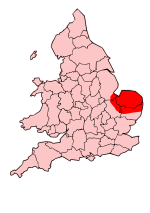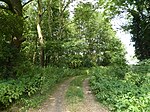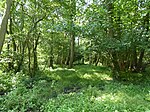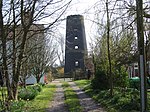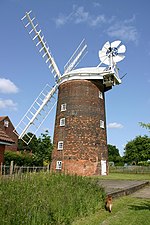Kingdom of East Anglia
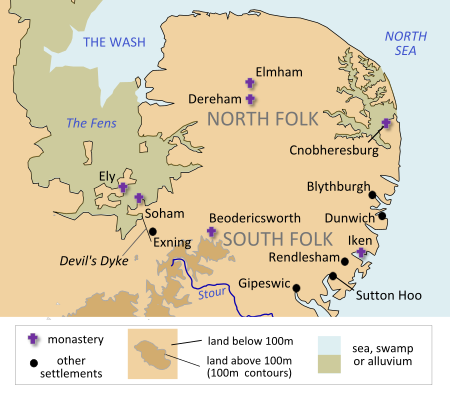
The Kingdom of the East Angles (Old English: Ēastengla Rīċe; Latin: Regnum Orientalium Anglorum), formally known as the Kingdom of East Anglia, was a small independent kingdom of the Angles during the Anglo-Saxon period comprising what are now the English counties of Norfolk and Suffolk and perhaps the eastern part of the Fens, the area still known as East Anglia. The kingdom formed in the 6th century in the wake of the Anglo-Saxon settlement of Britain and was one of the kingdoms of the Heptarchy. It was ruled by the Wuffingas dynasty in the 7th and 8th centuries, but the territory was taken by Offa of Mercia in 794. Mercia control lapsed briefly following the death of Offa but was reestablished. The Danish Great Heathen Army landed in East Anglia in 865, after taking York it returned to East Anglia, killing King Edmund ("the Martyr") and making it Danish land in 869. After Alfred the Great forced a treaty with the Danes, East Anglia was left as part of the Danelaw. It was taken back from Danish control by Edward the Elder in 917 and incorporated into the Kingdom of Wessex in 918.
Excerpt from the Wikipedia article Kingdom of East Anglia (License: CC BY-SA 3.0, Authors, Images).Kingdom of East Anglia
Fowler's Lane, Breckland District
Geographical coordinates (GPS) Address Nearby Places Show on map
Geographical coordinates (GPS)
| Latitude | Longitude |
|---|---|
| N 52.5 ° | E 1 ° |
Address
Fowler's Lane
Fowler's Lane
NR17 1BH Breckland District
England, United Kingdom
Open on Google Maps

